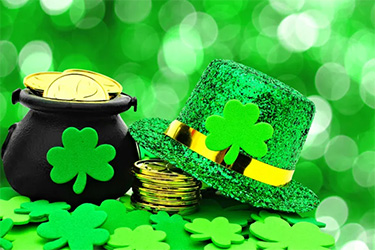A History of St. Patrick’s Day and Its Celebrations
 The history of St. Patrick’s Day originates in the early 17th century when it was made an official Christian feast day by the Catholic Church, the Anglican Communion (especially the Church of Ireland), the Eastern Orthodox Church, and the Lutheran Church. The day remembers Saint Patrick and the arrival of Christianity in Ireland and celebrates the heritage and culture of the Irish.
The history of St. Patrick’s Day originates in the early 17th century when it was made an official Christian feast day by the Catholic Church, the Anglican Communion (especially the Church of Ireland), the Eastern Orthodox Church, and the Lutheran Church. The day remembers Saint Patrick and the arrival of Christianity in Ireland and celebrates the heritage and culture of the Irish.
Patrick’s Day was originally celebrated in Ireland with religious services and feasts in honor of St. Patrick, one of Ireland’s patron saints. When Irish immigrants brought St. Patrick’s Day traditions to the United States, the day evolved into a secular celebration of Irish culture.
Boston has long staked claim to the first St. Patrick’s Day celebration in the American colonies. On March 17, 1737, more than two dozen Presbyterians who emigrated from the north of Ireland gathered to honor St. Patrick and form the Charitable Irish Society to assist distressed Irishmen in the city.
 In 1780 General George Washington commanded soldiers of Irish descent in the Continental Army and allowed his troops a holiday on March 17. This event became known as The St. Patrick’s Day Encampment of 1780. St. Patrick’s Day, while not a legal holiday in the United States, is nonetheless widely recognized and observed throughout the country.
In 1780 General George Washington commanded soldiers of Irish descent in the Continental Army and allowed his troops a holiday on March 17. This event became known as The St. Patrick’s Day Encampment of 1780. St. Patrick’s Day, while not a legal holiday in the United States, is nonetheless widely recognized and observed throughout the country.
Contemporary St. Patrick’s Day traditions include parades, music and dance events along with Irish themed parties, drinks and food. Many people dress in green clothing. Irish clubs and pubs often hold celebrations or have special events. Christians also attend church services and the Lenten restrictions on eating and drinking alcohol are lifted for the day and many communities hold large street parades to mark St. Patrick’s Day.
Here in Wilmington, the 1st St. Patrick’s Day Parade took place 22 years ago, and over the years has grown to be a substantial community event with many civic, school and community organizations participating. The Wilmington parade has received national recognition as one of the best “Small City” St. Patrick’s Day parades in the U.S.